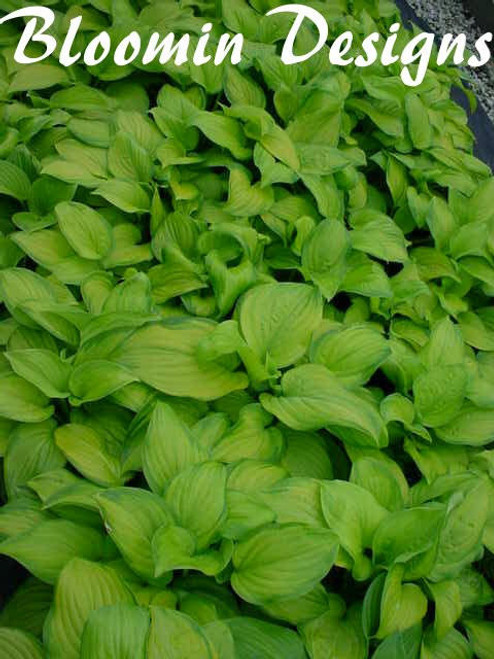Product Description
Hosta 'Fortunei Aureomarginata' (Hylander - AMS 1987) (25) Bare Root Plants
- Spinach green leaves with a hint of blue and deep golden-yellow margins measuring ??" to ½" wide
- Margins hold their color all season long
- The broadly ovate leaves are slightly puckered
- Pale lavender flowers appear on 40" scapes in mid to late summer
Hostas are exceedingly popular perennials in today's gardens due to their versatility in the landscape. Their subtle colors, tall flower scapes, and broad, coarse leaves fill a niche in garden designs that few other plants can achieve. Their large leaves provide excellent coverage for dying bulb foliage. Hostas also grow well in city environments where the air may be polluted by car exhaust, etc.
Hostas grow best in moist, well-drained, highly organic soils with a pH between 5.5 and 7.5. Sandy loam is better than clay because it provides more aeration for the roots. High-filtered or dappled sunlight is necessary for clean, healthy growth. Morning sun is tolerable and will help to intensify the leaf colors, but hot afternoon sun is usually deadly to hostas. They are most at home in shady, woodland settings and often work well as specimen or edging plants.
Hostas are very easy to propagate through division. This can be done at any time during the growing season with little or no affect on the growth of the parent plant. Since each division should have at least 3 eyes, plants should be allowed to mature for several years before being divided.
Especially in northern zones, hostas should be mulched with a layer of finely shredded organic material to prevent heaving in the winter. Mulch is beneficial because it retains moisture around the plant's roots, but it is also the ideal place for slugs to hide. Watch for holes in the center of the leaves. If they are present, so are slugs. Applying a slug bait in early spring when new shoots are beginning to emerge will help to reduce the slug population. After a few years when plants are firmly established, the mulch can be removed completely, which should eliminate the slug problem altogether. Also be sure to clean all hosta foliage out of the garden in early winter after the plants have gone dormant. By doing so, you will be ridding the area of the eggs of slugs and other leaf-eating insects.
Royal Horticultural Society's Award of Garden Merit -- 1993
Height:18 to 24 Inches
Spread: 40 inches
Scape Height: 40 Inches
Hardiness Zones: 3,4,5,6,7,8,9
Flower Color: Purple shades
Foliage Color: Variegated
Part Shade (4-6 hrs. Direct Sun) to Full Shade (< 4 hrs. Direct Sun)
Average to Consistent Water Needs
Average to Fertile Soil Quality
Bloomtime: Midsummer to Late Summer
Attracts Hummingbirds
Growth Rate: Medium
Border Plant, Mass Planting, Cut Foliage, Easy To Grow, Edging, Attractive Foliage, Specimen, Focal Point
Other Details
The most important part of the plant is its root system. Healthy roots are the foundation of a healthy, vibrant plant. The type of plug container used is based on the specific needs of the plants. Perennials offered as bare root traditionally perform better when planted as bare root.Planted in a specialized mix, potted plants have well established root systems. Top growth stage will vary depending on the current life cycle and time of year when shipped. In Winter and early Spring dormant plants may be shipped. Dormant plants may be planted right away, even before the last frost date.
Most bare root varieties are field grown for at least one season, though Hemerocallis and Hosta are grown for two seasons. The bulk of the soil is removed during the harvesting process and the tops of most varieties are trimmed back to the crown. They are graded, packed in shredded aspen or sphagnum moss and stored in freezers until ready to be shipped.
See our Container Sizes and Bare Root Perennials pages for more information.
Plant information and care is provided in the Overview section, Plant Genus Page and general information is provided in the Planting Care & Guides. Additional questions can be asked on each Plant page.
Plant Spacing: Using the maximum mature spread or width of a plant to guide spacing, ensures space to grow to full size. To fill an area sooner, plant them closer together. Just remember, future thinning or transplanting may be needed.
Water: Keep a close eye on newly planted perennials, especially throughout the first growing year. Most early plant loss is due to too much or too little water!


















